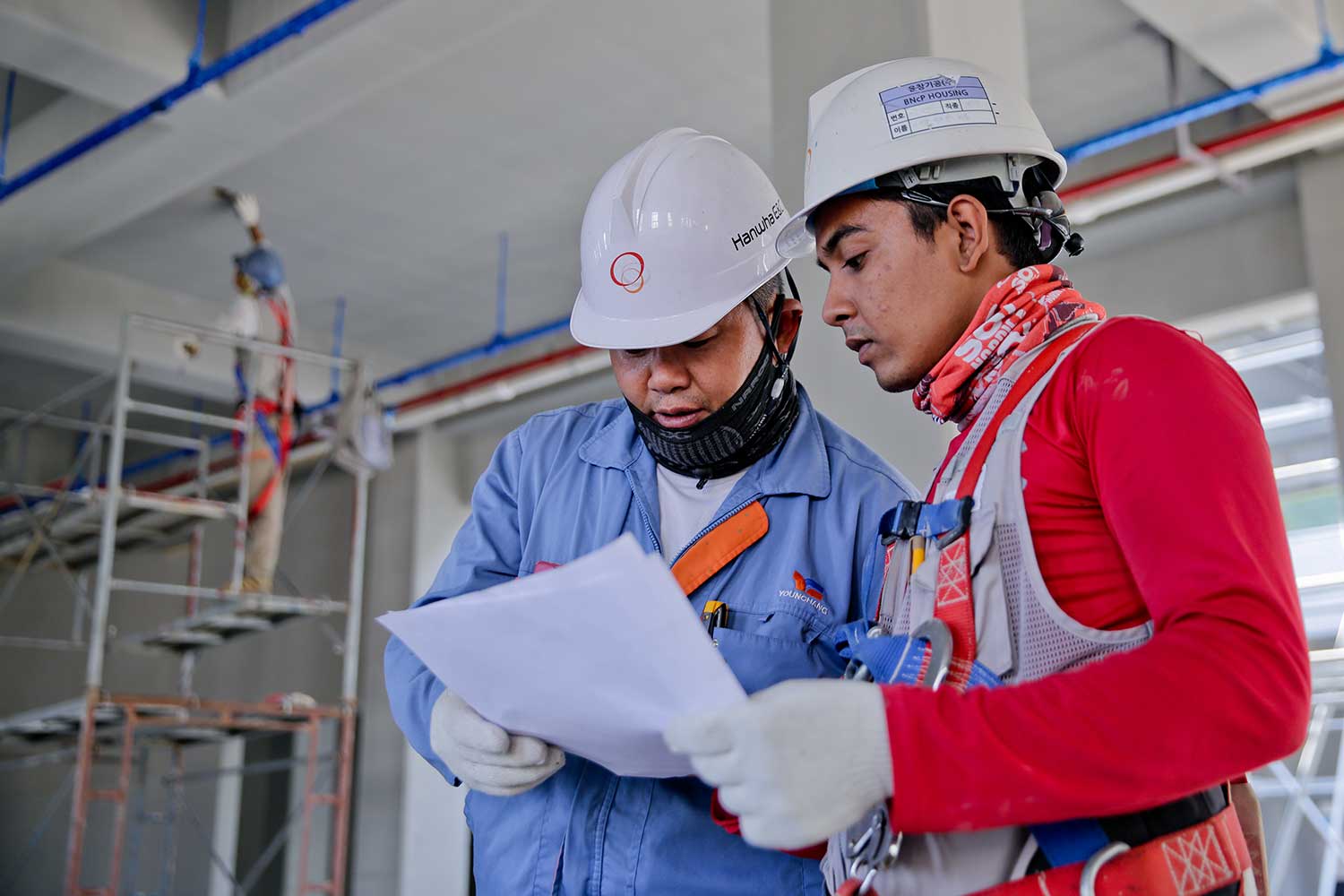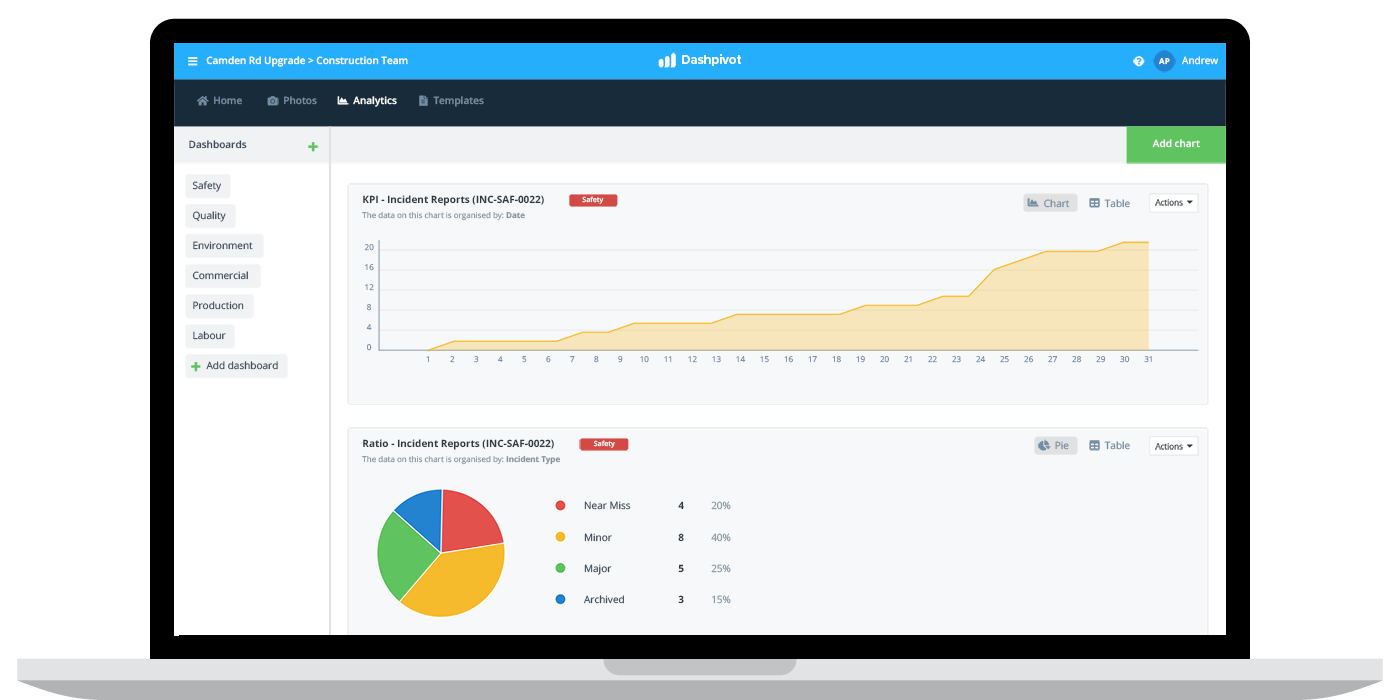Safety – Total case incident rate

TCIR: Total case incident rate
What is total case incident rate?
The total case incident rate or TCIR is an objective metric which measures the number of work-related injuries per 100-full time workers during a one year period. Total case incident rate is one of the core safety KPIs and is monitored closely, especially in high risk industries like construction, agriculture and manufacturing.
You may see the total case incident rate being used interchangeably with the total recordable incident rate.

Calculating your total case incident rate using the TCIR formula
The formula for calculating your total case incident rate is a quite simple. Take your total number of recordable cases, multiple that number by 200,000 and then divide that combined number by the total number of hours worked.

As an example total case incident rate calculation, if a company had 2 recordable cases during the year and 1,000,000 hours worked, their TCIR would be:
(2 x 200,000) / 1,000,000 = 0.4 total recordable cases per employee
This would be a low TCIR for many industries, as you will see when delving into the TCIR averages below.
Why monitor your total case incident rate?
The purpose of the total case incident rate, like most safety KPI's, is to help companies understand and improve their internal safety records, processes and procedures, and to enable external parties and authorities to monitor and investigate high risk environments or poorly performing organisations in order to prevent negligence and the ensuing issues and incidents which will inevitably arise.
The TCIR serves as an objective benchmark which companies and auditors can use to evaluate the operations and safety program/s of that company.
This 'evaluation' can be done by cross-referencing the total case incident rate across similar industries and similarly sized projects and companies, or it can be done by tracking this metric over time.
A TCIR number in and of itself doesn't necessarily say 'good' or 'bad', but a worse TCIR than other construction companies performing similar projects, or a quick rise in incidents because of a change of procedure or equipment can really help companies to understand how they are performing.
For all the benefits of TCIR, there are some weaknesses in the measurement as well. One of the major ones is that your TCIR is a lagging safety metric of 'lagging indicator' (here's some lagging indicator examples).
This means that the measure is not necessarily 100% indicative of future performance. A company may have had an alarming TCIR in the past year, but taken drastic measures to improve that. These measures and positive changes will not be reflected until the company calculates a new TCIR which could be months later.
This is why combining the total case incident rate with leading indicators like the number of safety training hours and risk assessments being performed is critical to overall safety performance.
What is an acceptable total case incident rate?
An acceptable total case incident rate will be most dictated by the type of work your company does, and the industry it operates in. Total case incident rates fluctuate quite heavily between relatively 'mellow' jobs like insurance and banking and heavy industries like construction.
On the banking, insurance and professional services end of the spectrum, an acceptable TCIR will likely be somewhere in the 0-1 cases per 100 workers.
On the other end of the spectrum, more dangerous industries like construction and agriculture will be in the 2+ range, with some bodies recording incident rates as high as 7-13 in some specific industries.
In terms of company size and TCIR, because the measure is conducted on a common scale, the variance is relatively small. According to the Bureau of Labour Statistics, companies with less than 10 people have an average TCIR of ~1.5 while companies with more than a 1000 have a total case incident range around 4.5.
Total case incident rate averages
You can see some of the total case incident rate averages by industry below, which has been compiled and assessed from a few years ago.
| Industry | Incident rate (per 100 workers) |
|---|---|
| Agriculture, forestry and fishing | 2.7 |
| Mining | 1.4 |
| Manufacturing | 2.8 |
| Electricity, gas, water and waste services | 1.1 |
| Construction | 2.6 |
| Wholesale trade | 1.9 |
| Retail trade | 0.9 |
| Accomodation and food services | 1.1 |
| Transport, postal and warehousing | 2.4 |
| Information media and telecommunications | 0.5 |
| Financial and insurance services | 0.2 |
| Rental, hiring and real estate services | 0.8 |
| Professional, scientific and technical services | 0.4 |
| Administrative and support services | 0.7 |
| Public administration and safety | 1.2 |
| Education and training | 1.3 |
| Arts and recreation services | 1.9 |
| Other services | 1.1 |
| All industries | 1.5 |
A few tips for improving your TCIR
There are a few key drivers which companies can use to improve their TCIR over time.
One of these drivers is of course formal safety training. The more well trained your people are in performing activities safely, and the more cognisant and aware they are of being safe, the less incidents you will have on your projects and sites. Investing in safety training for people's core responsibilities as well as investing in general safety practices and processes can have a big impact on how people go about their daily activities.
Getting stakeholders and key decision makers together for safety meetings where performance can be discussed and improvements suggested is also low hanging fruit for companies and people who are busy delivering projects.
Less obvious, but equally impactful is less formal training in the form of safety toolbox talks like this and general safety discussions.
For many years, many dangerous industries suffered from a crippling safety stigma, where safety was seen as unimportant or even 'weak'.
This stigma is often hard to break down, and many industries still require a lot of conscious work and a new generation of workers to come through to change this mindset. But encouraging people to be open and transparent about safety is a great start, and an essential step in lowering that TCIR.
From a process standpoint, one of the biggest changes you can make is through how you process your incident information. In the past, seeing the total case incident rate at the end of a project or year was the first time the safety and management team had some insight into the incident rate.
This meant that making changes was slow and difficult - and that the TCIR was an even greater lagging indicator.
Today, companies can manage these metrics in real-time by taking advantage of new tools and technologies.

An example of this type of technology can be seen above, where a company operating on a project-basis is able to see how many incident reports have been generated over time.
This type of data and information enables safety teams and companies to spot trends and issues straight away, and course-correct before greater issues arise.
In this case, knowledge really is power, and making changes a month into a specific project because the incident rate is higher than normal will have a huge impact on that final TCIR number - which was historically left to bubble away for months at a time with no insight into what was actually happening on the ground.
Safety is becoming increasingly important across all industries, but the heavy industries are a focus for companies operating on those industries as well as for industry bodies and regulators.
While the total case incident rate in these industries is always likely to be higher than the more subdued industries, the faster adoption of tools which help these companies convert all of the critical data being collected on their projects and sites into actual insights - the quicker they will be able to make improvements and lower the number of TCIRs, which is a great outcome for workers, companies and society at large.
People in 70+ countries use this safety management system to streamline and improve their safety processes, outcomes and TCIR.
